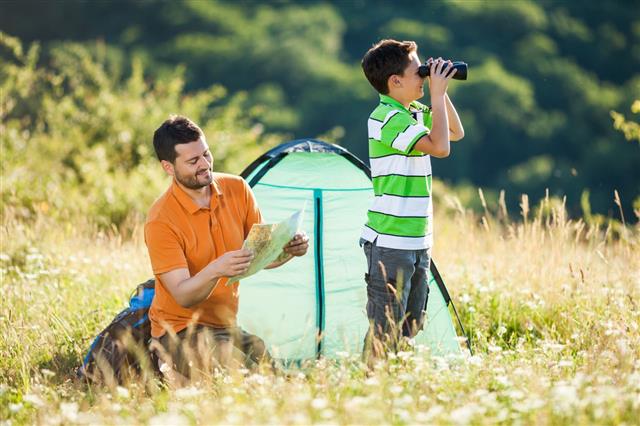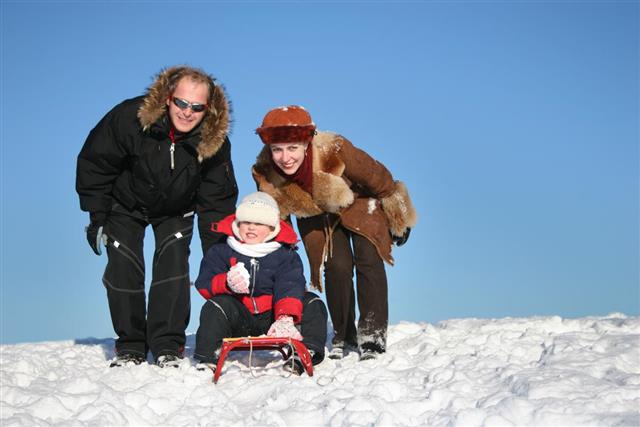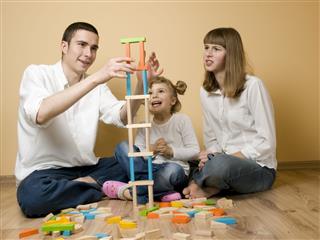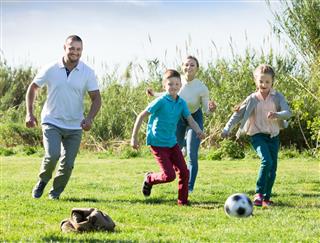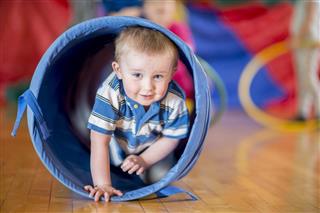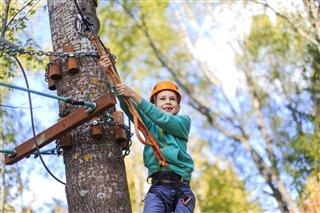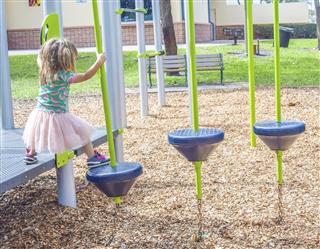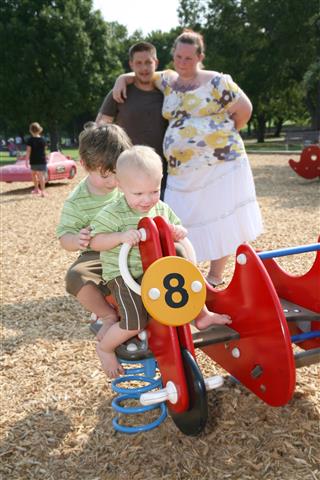
Obstacle races like the Sack Race and Tub-Hop are a great diversion from the conventional outdoor games. The series of simple to difficult tasks keep children intrigued during the activity. Obstacle races are perfect activities to organize at birthday parties, kid’s summer camps or just children’s day out. These physical activities not only keep the children occupied, but also provide them with ample amounts of exercise.
Today, children are addicted to video games and television, thus these obstacle races are great ways to keep the children busy and active. Physical activities help improve the child’s gross motor skills, coordination, balance and overall child development. Generally, obstacle races are set up outdoors; however, when the weather is bad, they emerge as intriguing indoor obstacle courses.
While setting up an obstacle course, one needs to keep in mind the different activities such as hopping, jumping, crawling, walking, climbing, etc. that can be incorporated into the course activities. Some 6-8 stations are good enough to have a decent obstacle course. There are various obstacle course ideas that one can choose from, to keep the children entertained in one’s backyard. However, the suitability will depend on the age group of children you are planning the activity for. Most of the activities mentioned below are meant for children between the ages of 6 to 13.
A newspaper is commonly available at home. Just get hold of as many newspapers as one can and set them aside for this fun activity. Provide the children with two sheets each. Ask them to place one sheet before them and walk from one marked line to another. They need to place one sheet before them and step on it, then place the next sheet in front of them and step on it, and then turn around to lift the previous sheet for the next step.
For this station, one needs a wooden ladder that has been sanded to prevent splinters from piercing their tiny legs. The ladder should also be painted a bright color. Lay the ladder flat on the ground and ask the children to run through its rungs, as quickly as they can.
For this station, one needs 8-10 simple plastic hoops. Place the hoops in a straight line and ask the kids to step into the first loop. Instruct the child that he or she needs to step into the hoop, lift it overhead and then drop it behind as he or she moves ahead.
At a point in the obstacle course place the pogo stick. The child has to use the pogo stick to hop till the next challenge of the course.
Dig about 5-6 holes in the ground equidistant from each other. Insert a 2 foot tall bamboo stick into each one. At about a distance of 3-4 feet from the bamboo line construction, erect another bamboo line of the same height. Then tie threads from one bamboo pole of line 1 to bamboo pole of line 2, in a zigzag fashion. This way you will get a thread mesh on top. The children have to crawl on their bellies to complete this obstacle course.
If you happen to get hold of a small tire, then you can place it in the obstacle course. The child has to place the tire in a vertical position and then using the stick, he or she is to roll the tire all the way till the next challenge.
Provide each child with a small fabric bag (with cloth handles). Place golf balls across the backyard at equidistant spots in a line, or in a zigzag pattern. The kids are to squat at the starting line and then jump like a frog towards the golf balls. When they reach the golf ball, they can stand and put the ball into their fabric bag that is hanging onto their wrists. The more the number of golf balls that one can collect, the better.
Mark a route for this activity and place various goodies or objects at different spots on the course. The child is supposed to cycle and collect as many items as he can and place them in the basket. The rule that needs to be remembered is that the child should not leave the bicycle at any time. In order to pick up the item, the child has to cycle towards the side of the object and then bend and pick it up. One can increase the difficulty level, by altering the cycling path.
Tie a sturdy string from one tree to another, or any support you can find. You want to tie it such that the height of the string is about one to feet above the child’s head. To this horizontal line, tie bagels, such that the bagel hangs like Christmas decorations from a string. The child has to come and stand before the bagel, keep his hands behind him and chew three bites from the bagel. Buy small bagels, to increase the difficulty level.
Place tangerines on the ground, near the starting line. The children are to kneel on the ground and keep their hands behind their back. They are expected to move the tangerine only with their noses till the finishing line.
Cushion Crawl
If you have some old cushions or pillows in the attic, bring them down for this activity. In this station, one needs to place two to three rows of cushions or pillows, adjacent to each other. The children are supposed to crawl over the cushions and reach the other side.
Table Crawl
This station activity involves balloons. The table should be completely masked by the bouncing balloons that have been strung together. For a 3-by-6 foot table, around 100 balloons are required. Use yarn and tape to keep the balloons firmly in place on top of the table, underside and across the four legs. Use foam padding to wrap the legs of the table. Ask the kids to crawl into the sea of balloons (under the table) and come out from the other side.
Brick Hop
Place blocks of bricks at a small distance from each other, such that the child can hop from one brick to another. Make the course in a zigzag fashion. Let this brick line lead to the next challenge in the obstacle race. If you manage to get wooden blocks, you can place them instead of bricks.
Using the above-mentioned obstacle course ideas as a guideline, one can come up with many more obstacle course games. The difficulty level of obstacle course for kids can differ depending on the age group, number of children and abilities. After deciding on the number of stations appropriate for the number of children participating, one should ensure that the activities are simpler at the initial stations, with the level of difficulty increasing with every station. If the number of children participating are large, one can sort them into groups. The time to accomplish the feat for each group can be noted with the help of a stop watch. The winning children or teams can be awarded certificates or prizes to add to the excitement.
